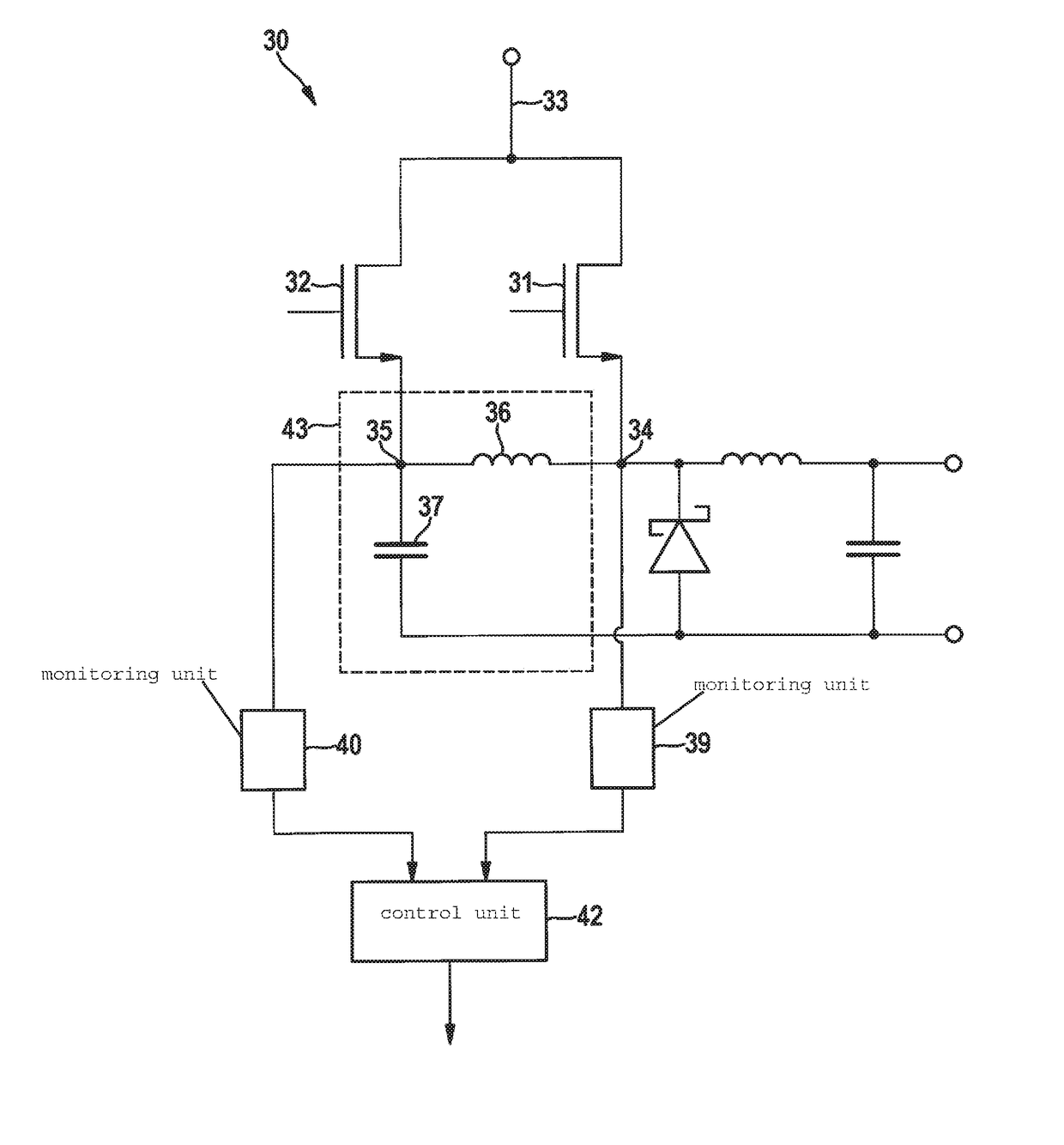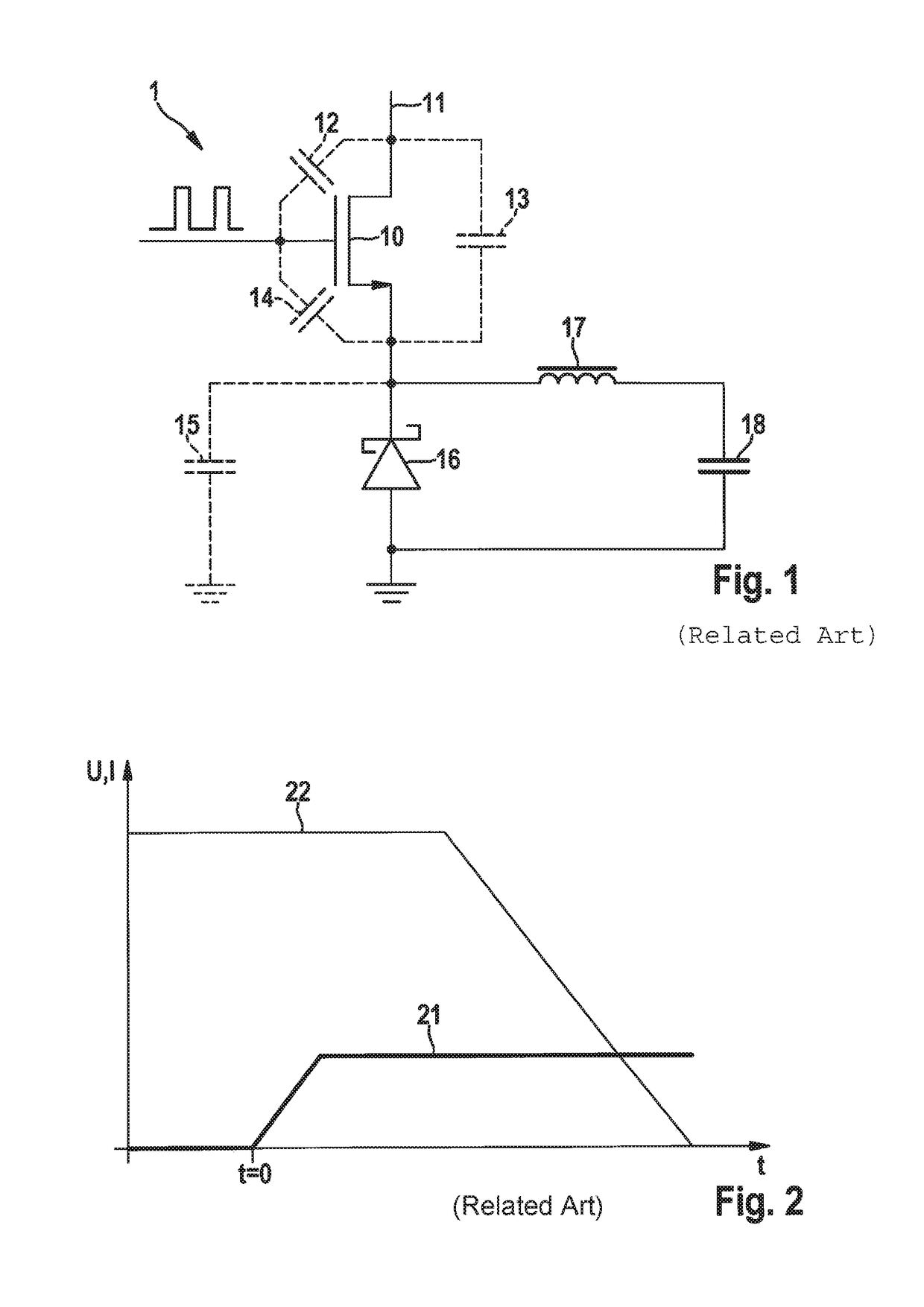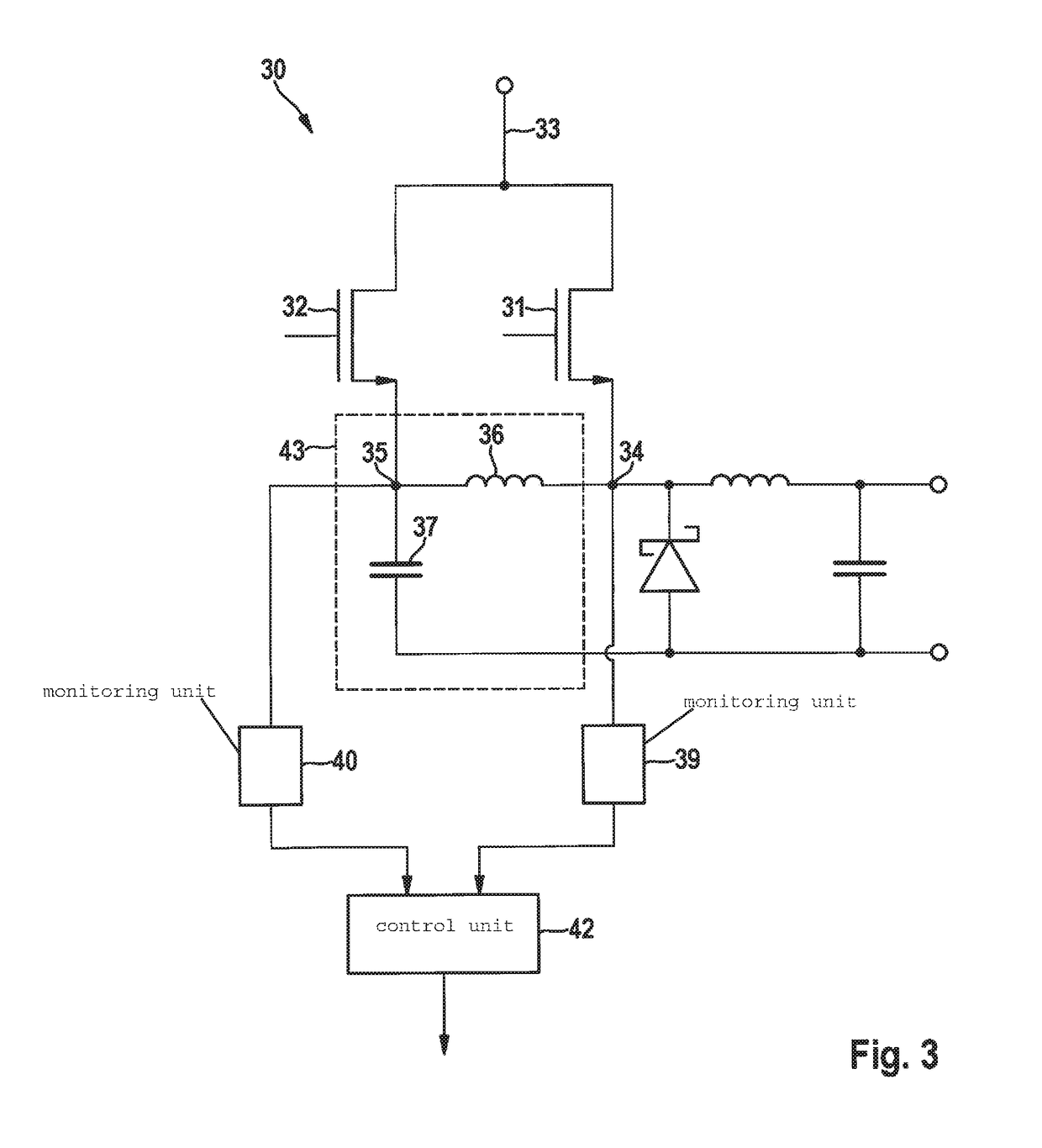Device and method for reducing switching losses in power transistors
- Summary
- Abstract
- Description
- Claims
- Application Information
AI Technical Summary
Benefits of technology
Problems solved by technology
Method used
Image
Examples
Embodiment Construction
[0021]FIG. 1 shows an output stage 1 of a step-down converter from the related art. The output stage includes a power transistor 10. Power transistor 10 is connected on the drain side to a supply voltage 11. FIG. 1 furthermore shows coil 17 and capacitor 18 of the output filter as components. A Schottky diode 16 is provided in parallel to the output filter. The parasitic capacitances present during operation of the output stage are dotted in FIG. 1. Every time the power transistor is switched on, which acts as a power switch, the charge of all parasitic capacitances of the output stage must be resistively reversed. The charges of drain-source capacitance 13 and node capacitance 15 are reversed with the aid of an input resistance of power transistor 10 and cause high power losses of the output stage.
[0022]FIG. 2 shows the associated voltage and current curves when the power transistor is being switched on. When the power transistor is being switched on (t=0), current 21 rises drastic...
PUM
 Login to View More
Login to View More Abstract
Description
Claims
Application Information
 Login to View More
Login to View More - R&D
- Intellectual Property
- Life Sciences
- Materials
- Tech Scout
- Unparalleled Data Quality
- Higher Quality Content
- 60% Fewer Hallucinations
Browse by: Latest US Patents, China's latest patents, Technical Efficacy Thesaurus, Application Domain, Technology Topic, Popular Technical Reports.
© 2025 PatSnap. All rights reserved.Legal|Privacy policy|Modern Slavery Act Transparency Statement|Sitemap|About US| Contact US: help@patsnap.com



